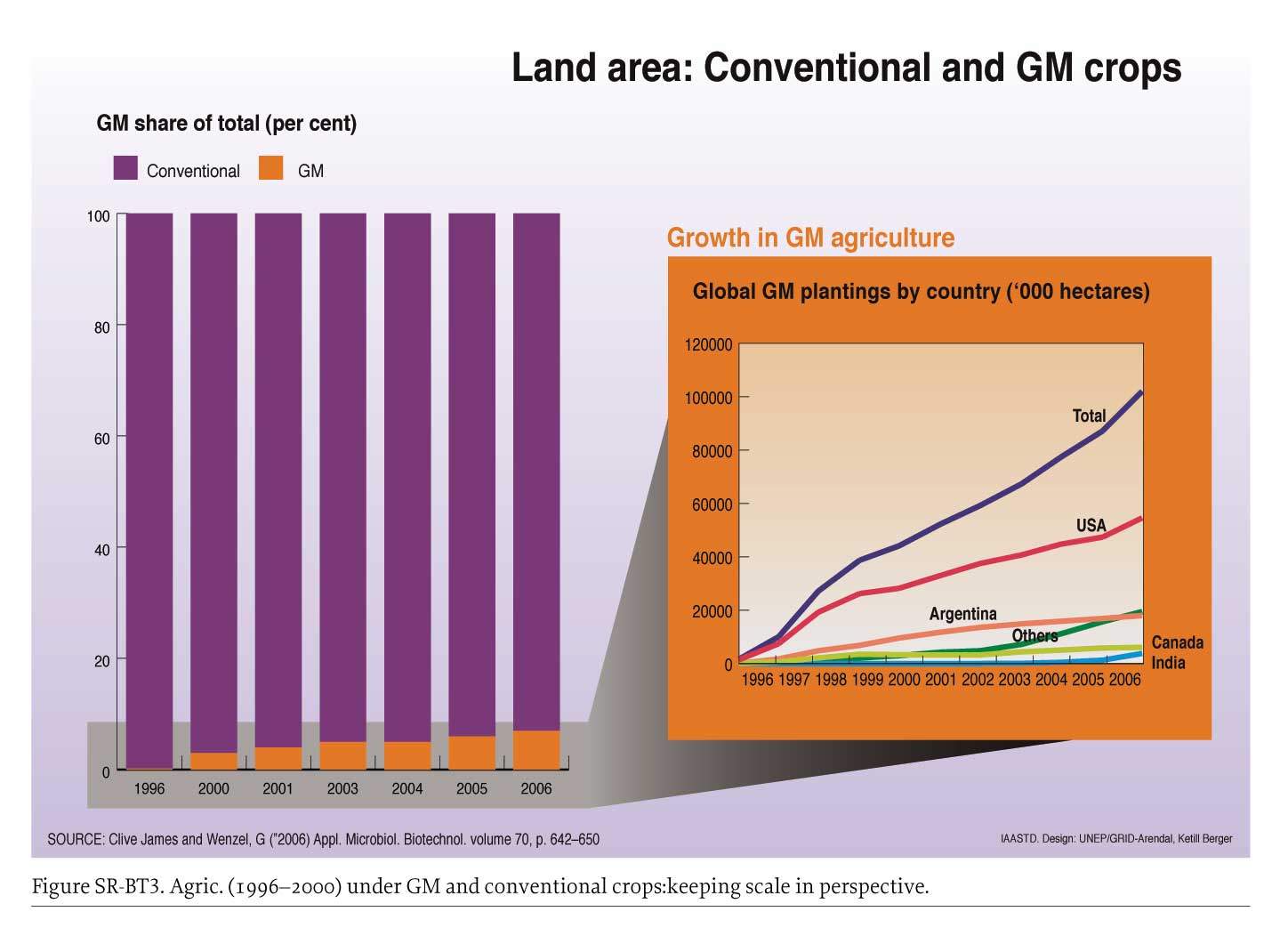in the long term as resistances develop to herbicides and insecticides [Global Chapter 3].
IPR frameworks need to evolve to increase access to proprietary biotechnologies, especially modern biotechnology, and address new liability issues for different sectors of producers. The use of IPR to increase investment in agriculture has had an uneven success when measured by type of technology and country. In developing countries especially, too often instruments such as patents are creating prohibitive costs, threatening to restrict experimentation by the individual farmer or public researcher while also potentially undermining local practices that enhance food security and economic sustainability. In this regard, there is particular concern about present IPR instruments eventually inhibiting seed-savings and exchanges.
Modern biotechnology has developed in too narrow a context to meet its potential to contribute to the small and subsistence farmer in particular [NAE Chapter 6, SDM]. As tools, the technologies in and of themselves cannot achieve sustainability and development goals [CWANA Chapter 1; Global Chapter 2, 3]. For example, a new breeding technique or a new cultivar of rice is not sufficient to meet the requirements of those most in need; the grain still has to be distributed. Dissemination of the technique or variety alone would not reduce poverty; it must be adapted to local conditions. Therefore, it is critical for policy makers to holistically consider biotechnology impacts beyond productivity and yield goals, and address wider societal issues of capacity building, social equity and local infrastructure [SSA Chapter 3].
Challenge: Biotechnology for Development and Sustainability Goals
Biotechnology in general, and modern biotechnology in particular, creates both costs and benefits [CWANA Chapter 5; |
|
ESAP Chapter 5; Global Chapter 3], depending on how it is incorporated into societies and ecosystems and whether there is the will to fairly share benefits as well as costs. For example, the use of modern plant varieties has raised grain yields in most parts of the world, but sometimes at the expense of reducing biodiversity or access to traditional foods [Global Chapter 3]. Neither costs nor benefits are currently perceived to be equally shared, with the poor tending to receive more of the costs than the benefits [Global Chapter 2].
Hunger, nutrition and health
Biotechnologies affect human health in a variety of ways. The use of DNA-based technologies, such as microchips, for disease outbreak surveillance and diagnostics can realistically contribute to both predicting and curtailing the impacts of infectious diseases [NAE Chapter 6]. The application of these technologies would serve human health objectives both directly and indirectly, because they could be applied to known human diseases and to plant and animal diseases that might be the source of new human diseases or which could reduce the quantity or quality of food.
Other products of modern biotechnology, for example GMOs made from plants that are part of the human food supply but developed for animal feed or to produce pharma-ceuticals that would be unsafe as food, might threaten human health [Global Chapters 3, 6]. Moreover, the larger the scale of bio/nanotechnology or product distribution, the more challenging containment of harm can become [Global Chapter 6].
All biotechnologies must be better managed to cope with a range of ongoing and emerging problems [SSA Chapter 3]. Holistic solutions may be slowed, however, if GMOs are seen as sufficient for achieving development and sustainability goals and consequently consume a disproportionate level of funding and attention. To use GMOs or not |

